There are many types of wire fences. Some are very simple, used to contain animals. And some that are very complex, used for the highest of security measures.
Wire is readily available and easy to work with. Furthermore, it’s strong and can be manipulated in may ways. As a result, wire is a common material for constructing fence.
The following fences are all types of wire fences. The manufacturing process is the only thing that makes them different.
High Tensile Wire

High tensile wire fence is a type of wire fence that has individual strands of wire, tightly stretched in multiple rows. The wire strands are smooth and designed to pull very tightly.
High tensile fence is common for pastures. Used for containing farm large farm animals. As a result of the spaces between each strand, it is not good for containing smaller animals such as pigs or sheep.
However, an electric charge known as a hot wire added to the high tensile fence will deter most animals from challenging it.
High tensile fence is easy to install. Most farmers and ranchers are more than capable of installing one.
Barbed Wire Fence
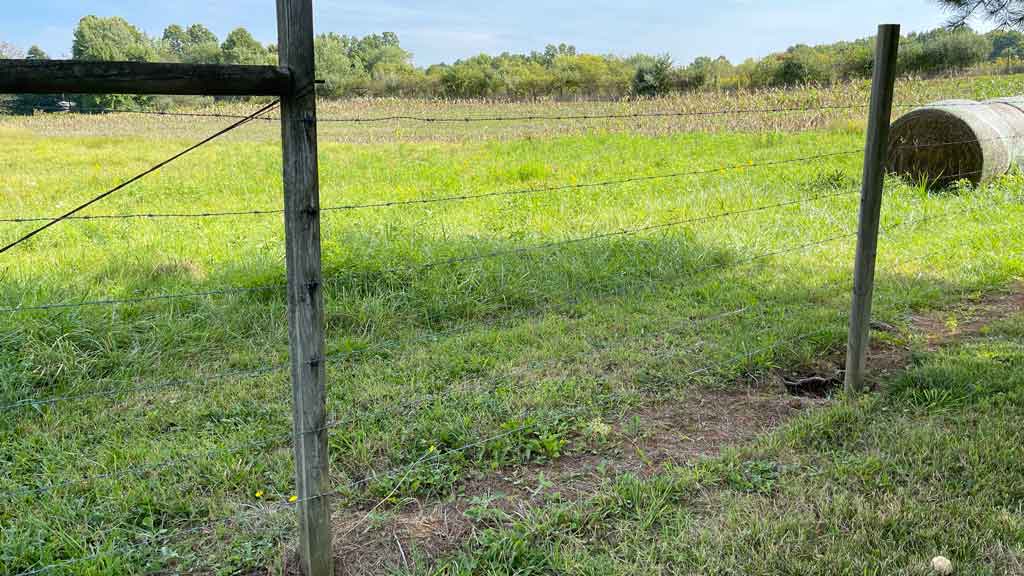
Barbed wire has two methods of installation. The first is just like a high tensile fence. With multiple rows installed to prevent the passing of farm animals. However, it has twisted metal points periodically spaced on the strand of wire .
These points become a deterrent to animals trying to push through the fence. As a result, there is no need to electrify a barbed wire fence.
The second use for barbed wire is to create a barrier on top of an existing fence. Mostly found installed on chain link fence.
A barb arm holds the strands of wire at a 45 degree angle or vertically. Most times having 3 strands. However, a 6 strand barb arm will be in the shape of a ‘”Y” and hold 3 strands facing outward on each side of the fence.
A type of wire fences designed to inflict harm, barbed wire is not for residential applications. Furthermore, some cities considered it illegal because of the harm is can cause to people and pets.
Welded Wire Fence
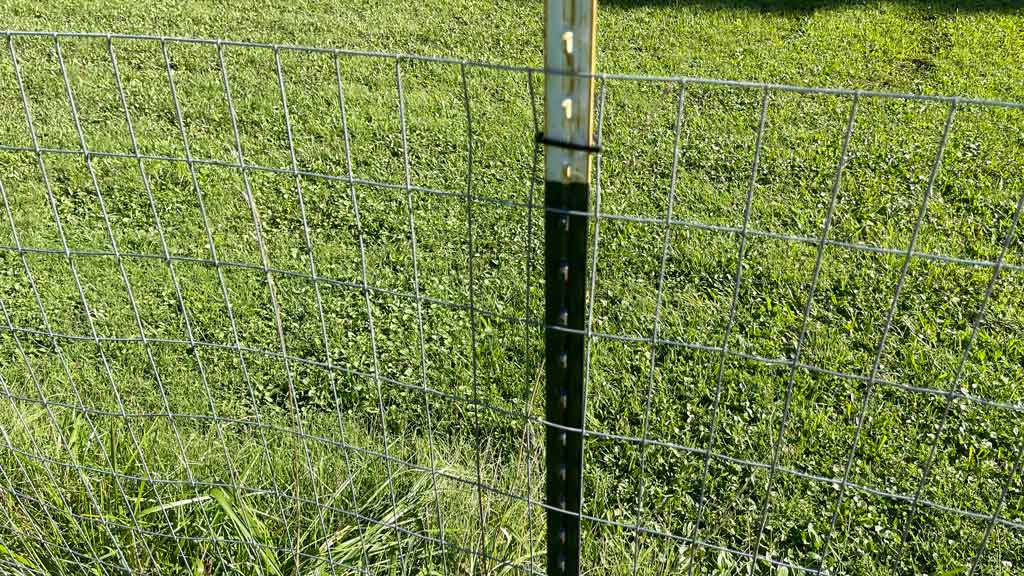
Welded wire fence has thin strands of vertical and horizontal wires, welded together at the intersecting points. These types of wire fences are for lighter duty farms or ranches.
Good for keeping in smaller animals and dogs. The wire cannot stretch very tightly before breaking. Furthermore, it does not flow over uneven ground well. This is due to the strands crossing perpendicular to each other, then welded square.
Often used as a backing in conjunction with other fences such as split rail and corral style fence.
Galvanized is standard for welded wire fence. However, colors are available. Most big home improvement stores will carry green and black welded wire.
The size of the holes in the mesh are pretty standard sizes. Most are 2×3 or 2×4.
Woven Wire Fence
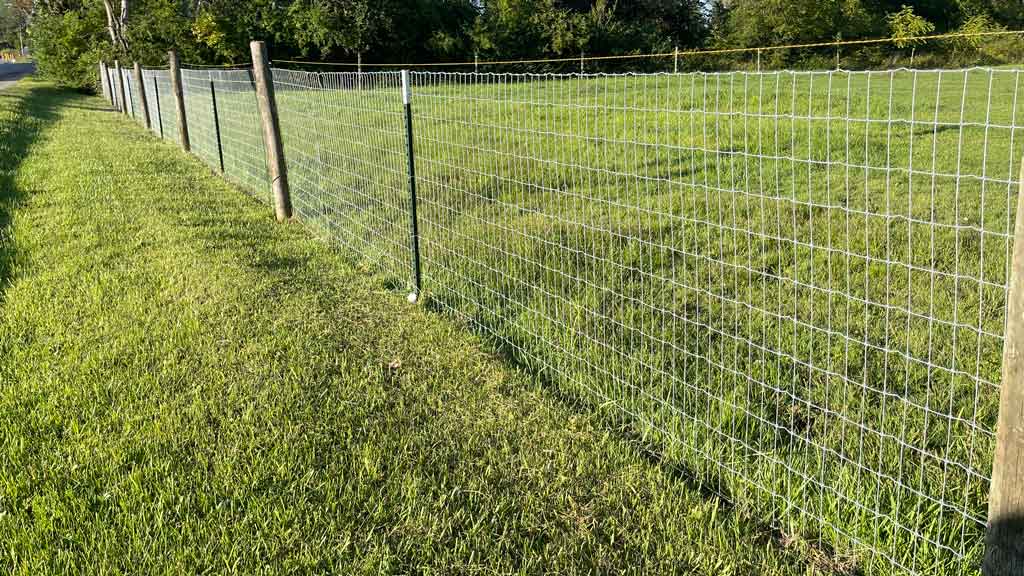
Woven wire fence is a stronger version of welded wire. Each strand is a heavier gauge. The biggest difference is how the vertical and horizontal strands fasten to each other.
A special knot ties the two strands together. This knot allows for the wire to stretch during the installation process without breaking at the intersecting joints.
Furthermore, it allows the wire mesh to follow grade better.
Woven wire comes in many heights to accommodate all sorts of applications. These types of wire fences hold in much larger and stronger animals.
Heights start at 48″ tall and go to 120″ tall for big game containment. However, height isn’t the only option.
The size of the holes in woven wire mesh comes in many sizes. Holes as small as 2×4 inches and up to 7×12 inches are available. Woven wire fence comes galvanized, made to last for decades.
Chain Link Fence
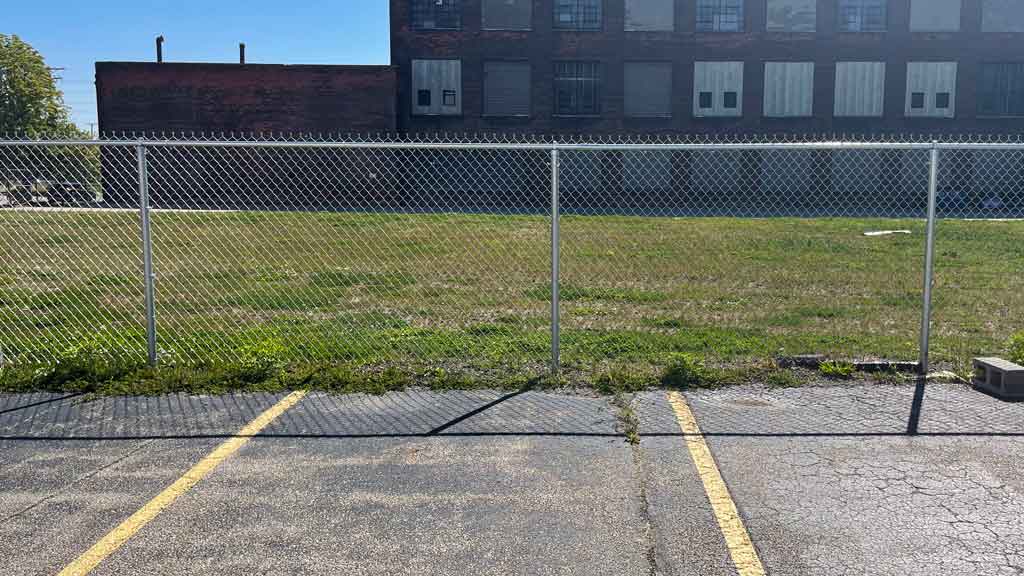
The most popular wire fence produced is chain link fence. The wire strands of chain link mesh weave together forming a diamond pattern. There are more options for chain link fence than all other types of wire fences.
The standard mesh size is 2″. However, mini mesh is available in various sizes with holes as small as 3/8″. Every measurement up to 2.25″ is available. 1″ mesh is popular for dog kennels.
The smaller mesh prevents dogs from getting to each other. 1-3/4″ is slightly smaller than the standard 2″ mesh.
It is most commonly used for tennis courts, where the smaller diameter of the ball can get stuck in larger mesh openings.
The gauge of the wire used to manufacture the mesh comes in different sizes too. 11 gauge, 9 gauge and 6 gauge are standard gauges for chain link wire.
The smaller the number, the larger the diameter when dealing with wire gauge. Chain link mesh comes vinyl coated too. Adding to the diameter of the wire, vinyl coating results in a larger gauge than standard galvanized chain link wire.
The vinyl coating allows for chain link mesh to be colored. Black chain link fence is the most popular. Green, brown and white are also standard colors. However, any custom color is available for a setup charge from the manufacturer.
Rigid Wire Panels
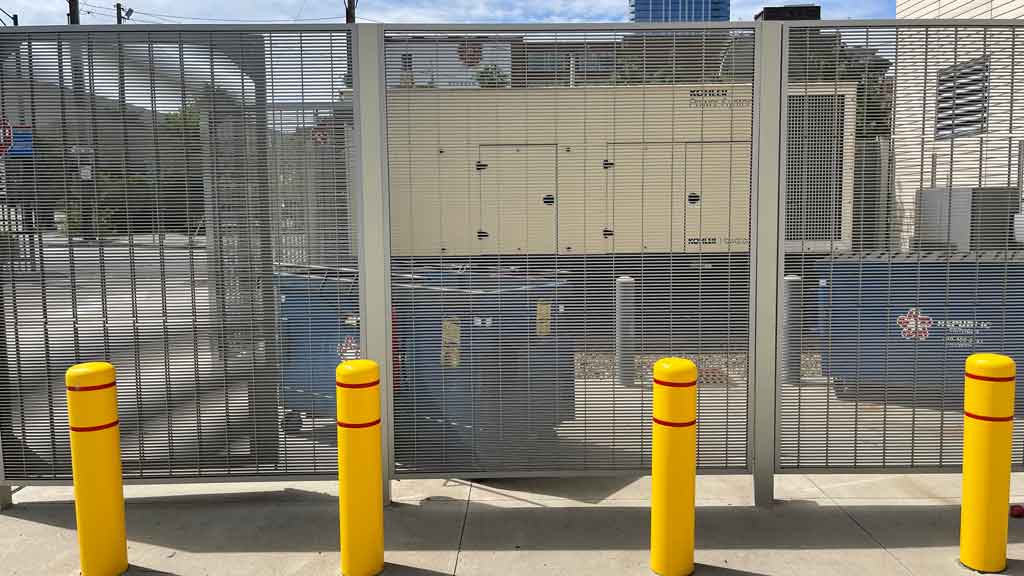
So far all of the types of wire fences we discussed are manufactured in rolls. Rigid wire panels are welded in flat sheets. Using heavier gauge wire makes them self supporting.
These panels come in a variety of shapes and sizes. Cattle fence panels come in many styles. These are 16′ wide wire panels by 4′ tall. 5″ – 6″ holes are standard.
However, cattle panels are available with smaller holes on the bottom and larger holes on the top. This type of panel is used to contain other smaller animals like pigs or sheep.
On the other side of the spectrum are high security wire fence panels. These type pf panels have wire strands welded together so close, that they prevent a handhold or foothold from being achieved. As result, making them unclimbable.
The strands of wire are so close that bolt cutters cannot even fit into the opens, keeping them from being cut. These types of rigid wire panels are used for the highest security applications.
Types of Wire Fences – Conclusion
As you can see, there are many types of wire fences used for many different applications. These 6 are the primary types.
All of these styles started the same way, as a single strand of wire. However, just by simply bending, welding or weaving one strand with others, transforms them into some sort of wire fence style.

